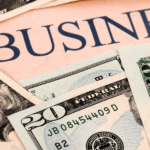Footwear retailers are beginning to adjust their pricing strategies as tariffs on imports loom over the industry. The additional costs are now translating into increased consumer prices. The current situation has made it crucial for businesses to revisit their pricing to safeguard profitability. Previously, many companies had boosted inventory levels to circumvent impending tariffs. However, as these stocks dwindle, the financial implications become more pronounced. The footwear industry now finds itself at a crossroads where both businesses and consumers feel the pinch.
Historically, the footwear sector has navigated numerous economic challenges, but the scale of these tariffs presents a significant hurdle. In comparison to previous market conditions where stability was relatively maintained, the introduction of such high tariffs has culminated in uncertainty. A prior survey by the Federal Reserve Bank of Richmond highlighted that a substantial number of businesses harbor doubts about pricing in light of further financial pressures. The unpredictability of these circumstances underscores the complexities facing the sector today.
How Tariffs Affect the Pricing Strategy?
Footwear companies are compelled to pass increased costs resulting from tariffs to consumers. With tariffs reaching up to 50%, retail prices are expected to mark an upwards trend. Matt Priest, CEO of Footwear Distributors and Retailers of America, remarked on social media, reflecting the industry’s sentiment.
“Only place for retail shoe prices to go with footwear tariffs doubling last month is [an emoji for up],”
he stated.
What Challenges Are Companies Encountering?
The industry grapples with managing these cost burdens amidst sluggish economic recovery. Pat Mooney, president of Footwear Unlimited, disclosed that his company is adjusting some wholesale prices by 5% to 10% to counter tariff effects.
“We are facing hard decisions with these significant tariff costs,”
Mooney elaborated, emphasizing the strain on businesses of all sizes.
An August intelligence report revealed that while small and medium-sized enterprises maintain high confidence levels, tariffs on imports dictate concern for many, particularly those without the leverage to mitigate these spikes. Micro-sized businesses are particularly vulnerable, with many indicating struggles tied to cash flow and delayed payments. The ripple of tariff-related uncertainties exacerbates financial strain on smaller firms more significantly than on their larger peers.
With tariffs on imports increasingly affecting household budgets, consumers face new challenges in purchasing decisions. The current economic landscape shows potential for further price escalations, complicating consumer spending. This scenario is not limited to footwear but impacts a wide range of imported products, thereby affecting broader market dynamics.
The imminent rise in footwear prices signifies a response to tariff implementation that ripples beyond just cost adjustments. Major companies and trade organizations anticipate ongoing dilemmas while urging retailers and consumers to brace for sustained shifts. Stakeholders must prepare for evolving economic conditions which may fuel prolonged discussions about trade and pricing policies within and beyond the footwear sector.










